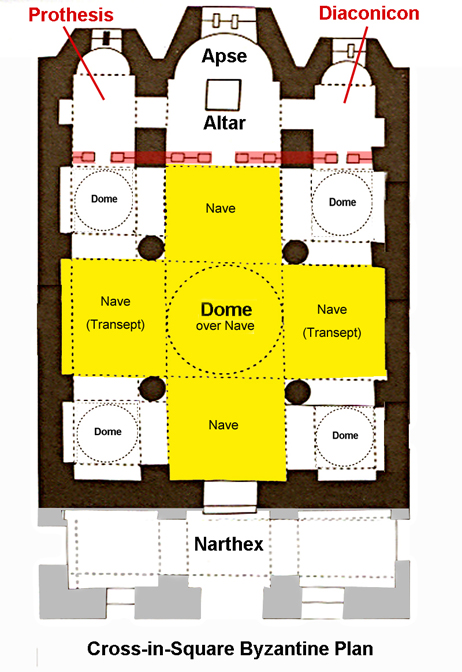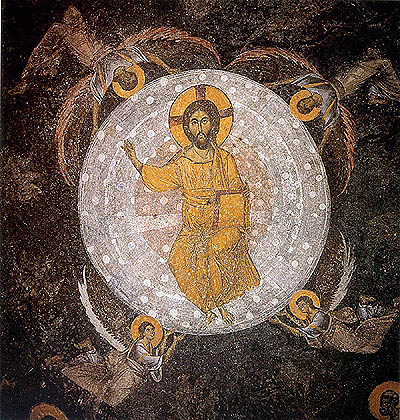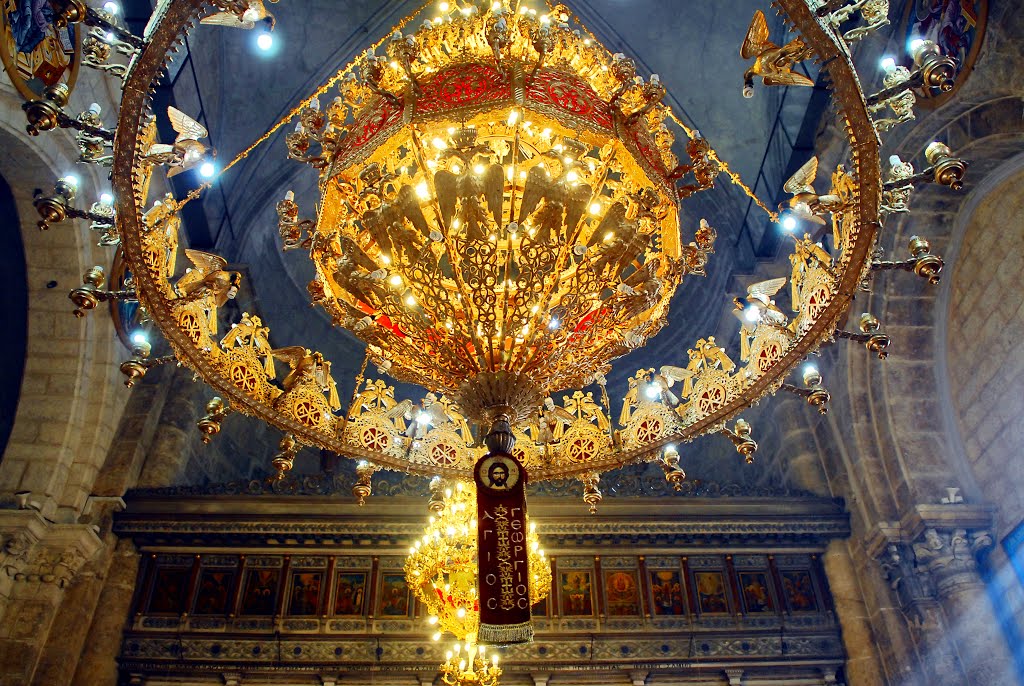Thread: The depiction or the Serbian circular dance "kolo" or "oro" from the 14th century Serbian monastery Lesnovo which is located in today& #39;s Republic of Makedonija... https://en.wikipedia.org/wiki/Lesnovo_monastery">https://en.wikipedia.org/wiki/Lesn...
I also think that it is important that on this fresco, people are dancing "kolo", which means spinning wheel, under what looks like the sun (see the exaggerated sun rays just above the dancing people)...
This is important because "kolo" or "oro" is a ceremonial circle dance representing the turning of the sun wheel...
Now we know that "kolo" is Slavic word meaning spinning wheel. However "oro" is said to come from Ancient Greek "χορός" (khorós) meaning "dance ring, round dance, dance accompanied by song, chorus, choir, band of singers and dancers, place for dancing" of uncertain origin...
This is the plan of a typical Orthodox Church. You can see that the central part of the church is the "nave", which is in Greek known as naos. https://en.wikipedia.org/wiki/Cross-in-square">https://en.wikipedia.org/wiki/Cros...
Now, the word ναός (naos) is an Ancient Greek word meaning temple, the innermost part of a temple, sanctuary, the part of the temple considered most pure and holy...
Which is why the central "naos" dome has an image of "Christ" looking down from heaven...The Central Dome in the naos of the mid-13th century Serbian Church of the Apostoles, in the Patriarchate of Pec, Kosovo...
http://www.rastko.rs/kosovo/pecarsija/hramovi/crkva_sv_apostola_eng.html">https://www.rastko.rs/kosovo/pe...
http://www.rastko.rs/kosovo/pecarsija/hramovi/crkva_sv_apostola_eng.html">https://www.rastko.rs/kosovo/pe...
What is very interesting is that in Orthodox Churches, right under the main naos dome, right under the image of "Christ in heaven", we find a circular chandelier called "horos" (circular dance???) with many candles on it...
#Chandelier">https://en.wikipedia.org/wiki/Polyeleos #Chandelier">https://en.wikipedia.org/wiki/Poly...
#Chandelier">https://en.wikipedia.org/wiki/Polyeleos #Chandelier">https://en.wikipedia.org/wiki/Poly...
During the chanting of the Polyeleos psalms, all of the candles are lit and chandelier is pushed with a rod so that it spins back and forth during the singing. This practice is still seen in the monasteries of Mount Athos and in other traditional Orthodox monasteries...
Now, Polyeleos is part of the Orthodox monastic nighttime liturgy, ending at dawn. It is called "ὄρθρος" (dawn) in Greek and "Оўтреня" (Oútrenya) in Church Slavonic. In traditional monasteries it is held daily so as to end at sunrise...
In parish churches, this service is held only on Sundays and feast days. Like Easter...
As part of the Easter "dawn" service "the priests open...the church door and together with the people exit the church and go in procession three times around it while singing the hymn of the resurrection..."
I believe that it has something to do with the way early Christians prayed: facing the rising sun in the east... Tertullian (2nd-3rd c. AD ecclesiastical writer) felt constrained to write this in his “Apology,” and again in his writing “Against Valentinian”.
Which is why the first churches were "oriented". The word "oriented" comes from
orient - east
to orient - to position towards east, to face east. From Latin oriēns (“east”).
orientation - correct position facing east
orient - east
to orient - to position towards east, to face east. From Latin oriēns (“east”).
orientation - correct position facing east
The earliest allusion to praying facing east in Christian literature is in Apostolic Constitutions: "a church should be oblong with its head to the East". Tertullian also speaks of churches as erected in "high and open places, and facing the light". http://www.newadvent.org/cathen/01362a.htm">https://www.newadvent.org/cathen/01...
This is why in Orthodox Churches the altar is at the eastern end, which means that both the priest and people face both the Altar and the East during the Canon...Which means that the door is at the western end...So opening of the door during Easter dawn sermon makes no sense...
But the Roman Basilicas built by the First Christian Emperor, Constantine, were built in a shape of a horse shoe or semi-circle with the priest at the western end, the altar in front of him, and everyone facing east toward the entrance doors and the rising sun...
Now opening the doors at Easter dawn prayer, and stepping out of the church, makes a lot of sense. The doors are opened to let the rising sun into the church and to signal to the faithful that it is time to go out and meet it...It or Him?
Is this rising sun facing "orientation" during prayer a Roman influence on Christianity? Sol Invictus??? Well, you could say that the Romans were reviving the religious practices of the builders of the First Temle...Who also prayed "to the rising sun"... https://oldeuropeanculture.blogspot.com/2017/09/sun-god-from-first-temple.html">https://oldeuropeanculture.blogspot.com/2017/09/s...
Sooo...Back to the naos, with the image of Christ in Heaven, under which the circular chandelier (oro) is made to spin during the sunrise service...Remember the first post from this thread? The Serbian medieval fresco depicting the circular dance (oro) spinning under the sun?
Remember oro (kolo) was a ceremonial circular, spinning solar dance...Depicting ever spinning solar wheel...So being danced under the sun is kind of appropriate...Why is oro (circular chandelier, source of light) made to spin under Christ during sunrise prayer?

 Read on Twitter
Read on Twitter







